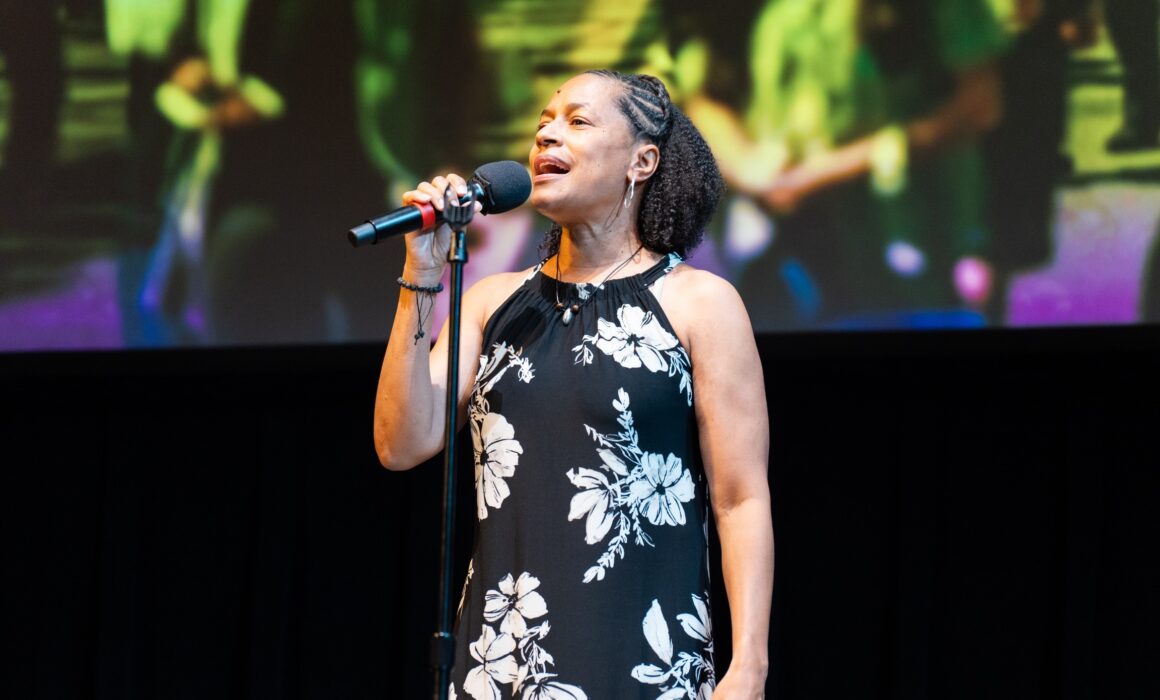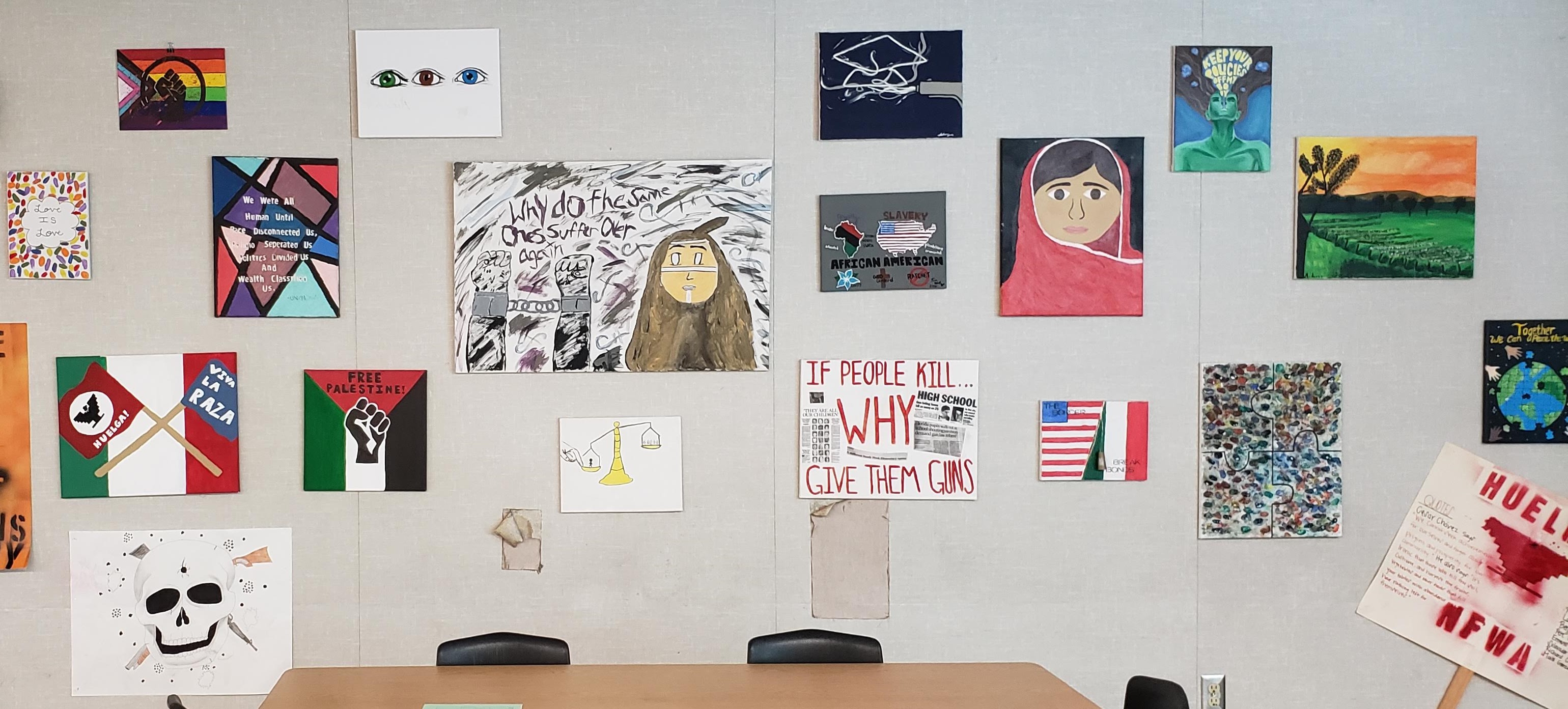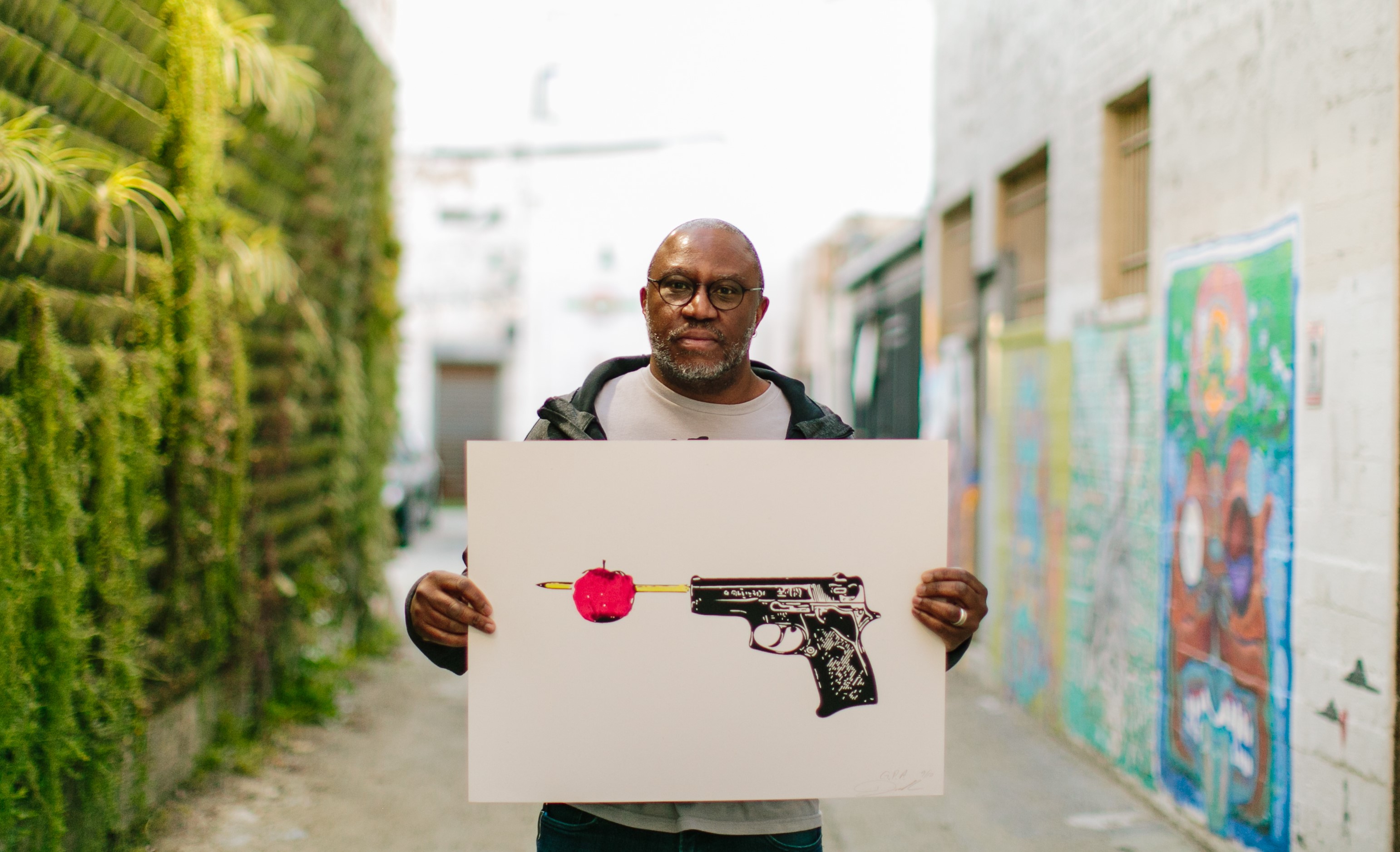
“Black History Month (BHM) is a time when I can more easily express the Blackness I live with 365 days a year,” says Veronica Talton, an elementary and middle performing arts educator in San Jose. “Even if it’s not accepted, it’s tolerated during the month of February.”
For Talton, a member of Alum Rock Educators Association, BHM is a time to recognize Black contributions to the world and share them with others.
“Black History Month is a time when we feel safe to celebrate who we are. It’s a time of liberation, celebration and appreciation,” she says. “I want to bring that to my students, my community and my union.”
When Talton arrived in East San Jose in 2019, she says Black students told her they didn’t feel like they were part of the school community, so she formed a Black history club on campus, open to any student interested in Black culture. When the COVID-19 pandemic hit in 2020 and pushed classrooms virtual, the superintendent allowed her to open up the club to any middle school student in the district.
“It’s basically a social justice collective,” says Talton, a CTA Cadre trainer. “I created a safe space for African American students and other ethnic minorities who wanted to amplify Black culture.”
Last year, she brought West African storytelling and drumming ensemble Oriki Theater to perform for students. Talton shared with students her experiences at alma mater Bennett College for Women in Greensboro, N.C., an HBCU (Historically Black Colleges and Universities), even teaching them a “step” dance that she says was a tribute to Black Lives Matter at School. In 2020, Talton led the effort along with other equity leaders to get the school board to adopt a Black Lives Matter at School resolution.
Last Fall, she invited a Black Stanford student to share his experiences at a predominantly white institution and pathways to college through the development of leadership skills. This year for BHM, she’s taking students to see Oakland-based performing artist Donald Lacy to perform his one-man show, “Color Struck,” for middle and high school students. Sponsored by Tabia African American Theatre Ensemble, the show will be followed by a discussion of Black issues related to complexion and colorism.
“I think they’ll be able to see themselves in the material,” Talton says. “Students will notice that the lighter you are, the more likely you are to be accepted by society.”
According to NEA, 79 percent of educators are white while half of students are non-white, nationally. Here in California, Black educators comprise only 3.8 percent of the teaching ranks, according to state data, while 77.4 percent of students identify as Black, Indigenous or People of Color (BIPOC). In an effort to create a supportive affinity space for Black educators in Santa Clara County, Talton and a couple other Black teachers formed a group that meets regularly to support each other and collaborate and share.
Redlands Teachers Association member and high school educator Duan Kellum helps students explore issues of identity, social movements and unconscious bias in his ethnic studies class. He was part of a district committee that developed the ethnic studies curriculum for Redlands Unified, focusing on helping students get a better understanding of others and learning what it means to be an American through a different lens.

Duan Kellum’s classroom wall, covered with student creations that include pieces on gun violence, race, justice and LGBTQ+ identity.
“Once you understand yourself, then you can start understanding others,” Kellum says.
Kellum’s class focuses on many perspectives — Sikhs, Arab and Muslim Americans, Latinx, Asians and Pacific Islanders, Native Americans and the fight for Black civil rights — and the intersectionality of their struggles. He incorporates the material in his curriculum throughout the year, not just during BHM.
“Black history is American history, and we include it with all the other histories whenever we can,” says Kellum, a former CTA Cadre trainer in unconscious bias and sensitivity. “I think my presence in the classroom represents Black history, and the material we cover addresses it.”
In addition to being an AVID and ethnic studies teacher, Kellum is an accomplished artist using screen-printing to shine a light on social and racial issues. He was vocally supportive of the Black Lives Matter protests nationwide in 2020, and his passion for social change is well-known at the high school and beyond.
Kellum incorporates art into his classes, asking students to utilize music, video or visual art to explore the identity issues they cover in class. His classroom wall is covered with student creations that include pieces on gun violence, race, justice and LGBTQ+ identity. Kellum also holds screen-printing workshops on campus.

Duan Kellum holds his screen print “GPA,” a commentary on school shootings. Credit: Laarn Palec.
Kellum works to create safe spaces for his students, serving as adviser for the Wildcat Pride Student LGBTQ+ group and working to elevate student voices on issues like gender-neutral restrooms on campus and removing gender-based restrictions on the choice of colors for graduation gowns.
During the pandemic, Kellum co-opened another safe space — this time in San Bernardino. Creative Grounds studio is part of a broader movement to bring arts and culture back to San Bernardino. There, he’s worked with local immigration coalitions to hold fundraisers and hosted a variety of community events, including book signings, monthly music events, youth poetry performances, LGBTQ+ events and a Dia de los Muertos celebration.
Attendees of last year’s San Gorgonio Service Center Council Leadership Conference were treated to a crash course on Art for Union Leaders led by Kellum, where he discusses the history of union art and how to create signs that resonate.
Kellum says the most meaningful piece of his ethnic studies work is exposing his students to important and thought-provoking material that resonates inside them, helps them learn more about themselves and facilitates connections with others.
“These are our future leaders, lawmakers and innovators. There are students who are positively taking in this information and it’s really rewarding,” Kellum says. “What we do is powerful — and now I understand why there is so much opposition to it.”
The Discussion 0 comments Post a Comment